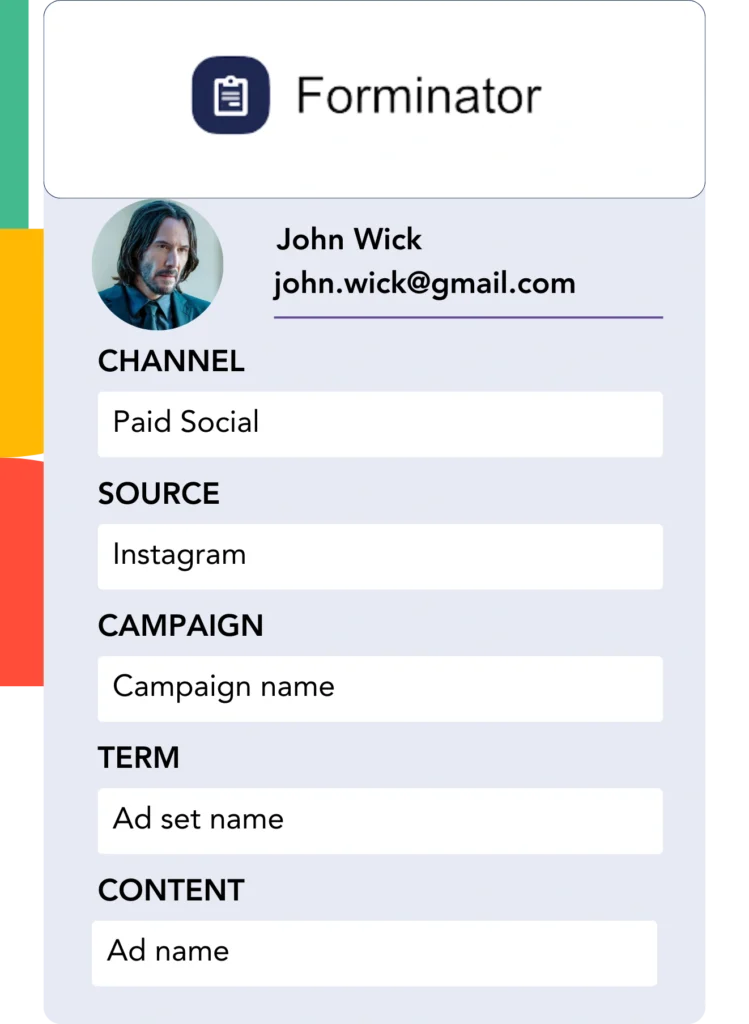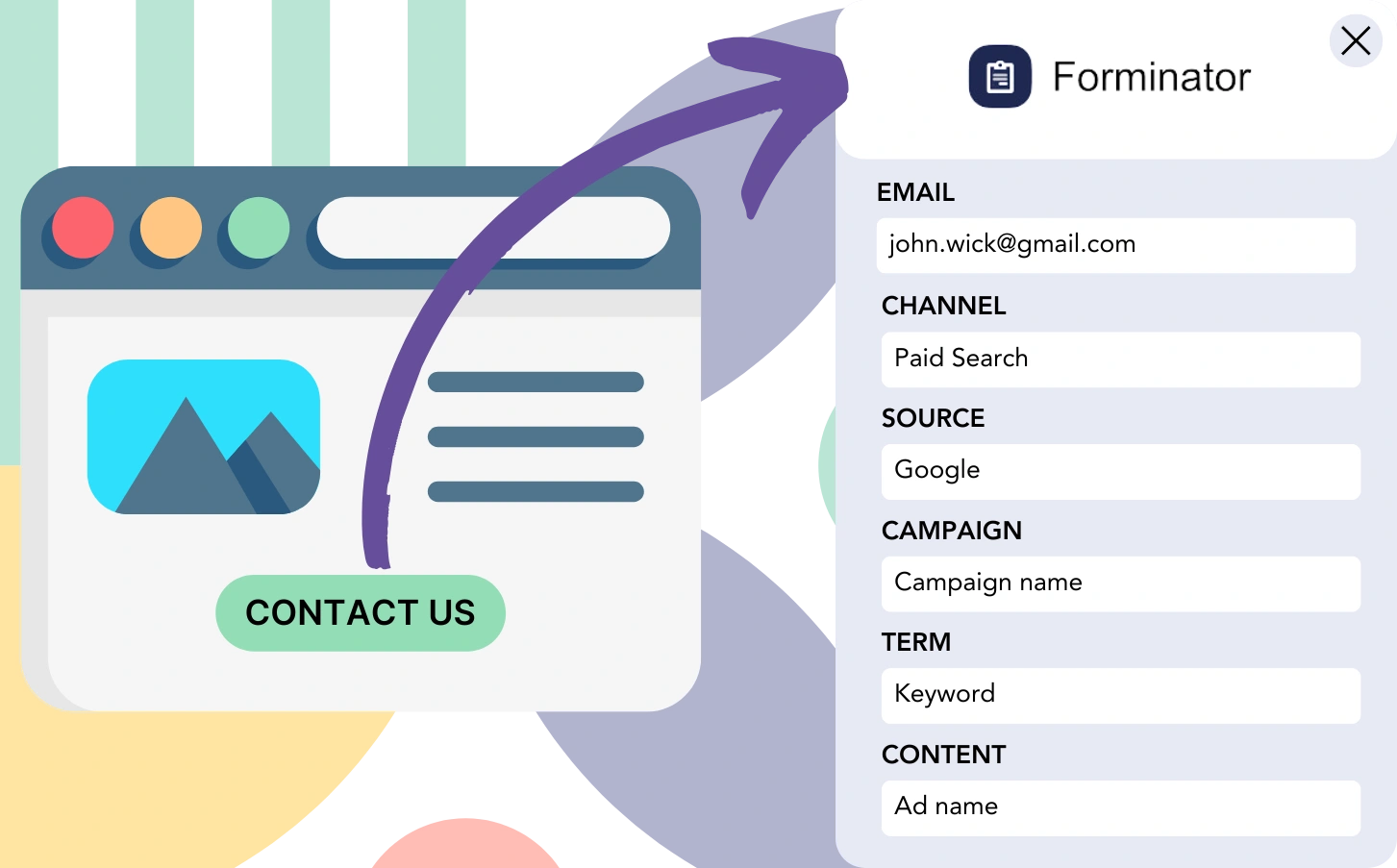Are you using Forminator to collect leads but struggling to connect them to the correct acquisition channel?
Likewise, when a lead turns into a customer, attributing them to a campaign or ad becomes impossible.
If proper tracking isn’t implemented, understanding your marketing results and identifying the sources driving leads, sales, and revenue becomes nearly impossible. This often causes businesses to overspend on channels without proven value.
Luckily, it’s now simple to connect each lead and sale to its source channel, campaign, keyword, and ad.
Let’s break it down step by step!
How to track the source of leads in Forminator
Step 1: Add Leadsources in your website

Leadsources is a valuable solution that tracks where your leads come from. When embedded on your website, it collects up to 7 critical lead source details for every lead captured:
- Channel
- Source
- Campaign
- Term
- Content
- Landing page
- Landing page subfolder
➡️ Sign up to Leadsources.io for free
➡️ Add the Leadsources tracking code to your site
Step 2: Add the hidden fields in Forminator

Hidden fields are not visible to users but contain important data submitted when the form is sent.
Leadsources captures the source of leads through hidden fields. These fields are automatically populated with lead source information when the form is submitted.
Step 3: Send lead source data to your CRM (optional)

Your CRM can receive lead source details directly from your form builder.
With your CRM, monitor and track the sources of your leads, sales, and revenue.
This allows you to track how marketing activities contribute to sales performance.
How does Leadsources work?
Leadsources automatically captures the lead source data when someone visits your site and populates the hidden fields in your Forminator. Once the form is submitted, this data, including the lead’s name and email, is transferred to Forminator.
Leadsources keeps track of the lead source information for each lead automatically:
| Lead source data | Fetched automatically |
| Channel | ✅ |
| Source | ✅ |
| Campaign | ✅ OR use UTM_campaign |
| Content | UTM_content parameter is required |
| Term | UTM_term parameter is required |
| Landing page | ✅ |
| Landing page subfolder | ✅ |
When UTM parameters are not available—such as with organic sources like Google search or mentions of your website in articles—Leadsources continues to capture key lead source data, ensuring your lead tracking remains comprehensive and accurate:
✅Channel
✅Source
✅Campaign
✅Landing page
✅Landing page subfolder
Leadsources uniquely tracks lead sources across both paid and organic marketing channels, setting it apart from other tools.
Select a channel to view the lead source details that Leadsources populates automatically in your form.
Pro tip:
LeadSources is compatible with all popular online form builders: Cognito Forms, Gravity Forms, Jotform, Typeform, WPForms, and more. Check out all our integrations.
Performance reports: Lead, sales, and revenue by source
By tracking lead source data in your CRM, you can produce performance reports like:
- Leads, sales, and revenue by channel
- Leads, sales, and revenue by source
- Leads, sales, and revenue by campaign
- Leads, sales, and revenue by term (e.g. keyword or adset)
- Leads, sales, and revenue by content (e.g. ad)
- Leads, sales, and revenue by landing page
- Leads, sales, and revenue by landing page subfolder
This gives you the flexibility to optimize your marketing budget by focusing on the channels, sources, campaigns, terms, content, etc., that generate the most leads, sales, and revenue.
Let’s examine the range of reports you can set up.
1. Lead source reports
Create performance reports to track the leads originating from:
- Channel
- Source
- Campaign
- Term (e.g. keyword or adset)
- Content (e.g. ad)
- Landing page
- Landing page subfolder
Example #1: Leads by channel
This report helps you identify the channel that creates the most leads.

Example #2: Leads by campaign
Now, you can focus on a specific lead source, such as Facebook ads, and track the leads generated by each campaign using its UTM tracking parameter.

Example #3: Leads by keyword and ad
After discovering the campaign with the most leads, you can further analyze which specific keyword or ad is generating the leads by using the term or content UTM parameters.

2. Sales source reports
After identifying the channels, sources, campaigns, terms, and content driving leads, it’s time to determine whether these leads are converting into sales and revenue.
Directing your leads to your CRM enables tracking of sales and revenue sources, such as channels, sources, campaigns, terms, content, landing pages, and subfolders.
By using the data, you can adjust your marketing focus to target the channels, sources, campaigns, keywords, and ads that contribute the most to sales and revenue.
There are many options for creating sales and revenue reports, such as:
- Sales and revenue by channel
- Sales and revenue by source
- Sales and revenue by campaign
- Sales and revenue by term (e.g. Keywords)
- Sales and revenue by content (e.g. Ads)
- Sales and revenue by landing page
- Sales and revenue by landing page subfolder
Check on this example:
| Channels | Search Paid | Social Paid |
| Leads | 50 | 75 |
| Sales | 5 | 6 |
| Average order value | $150 | $100 |
| Revenue | $750 | $600 |
Upon the launch of ads on both Google Ads and Facebook Ads Manager, the initial “Leads by Channel” report revealed that Facebook ads were more successful in generating leads compared to Google’s search ads.
After analyzing the sales and revenue data in your CRM, it became clear that the Search Paid channel, though yielding fewer leads, generated higher revenue than the Social Paid channel. Based on this, you shifted your budget allocation to prioritize the Search Paid channel.

